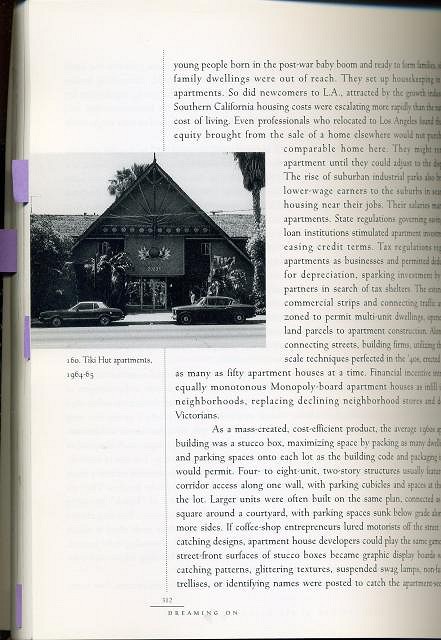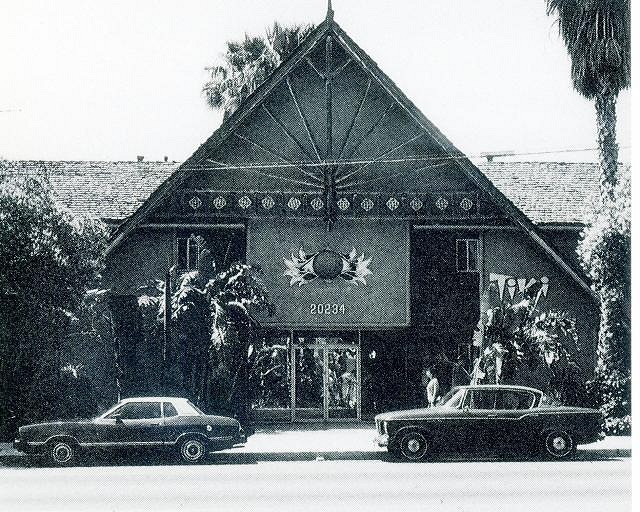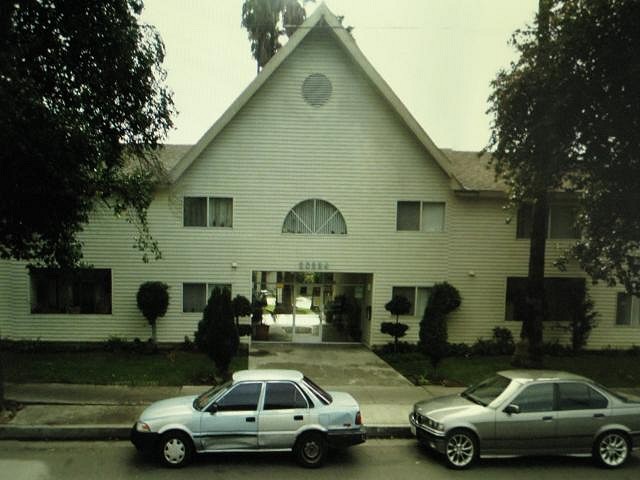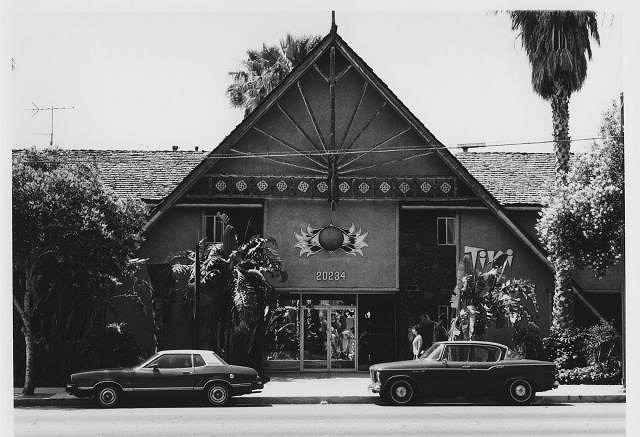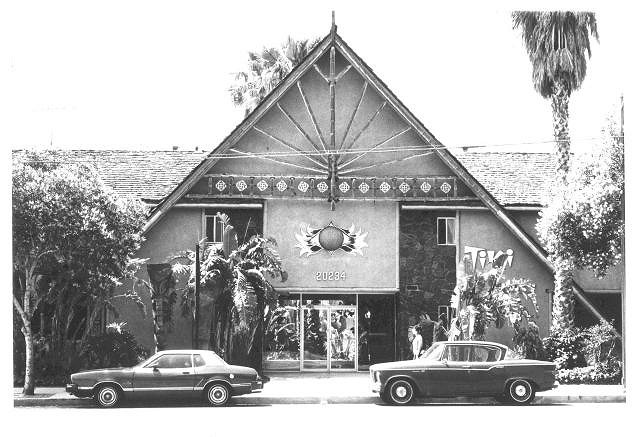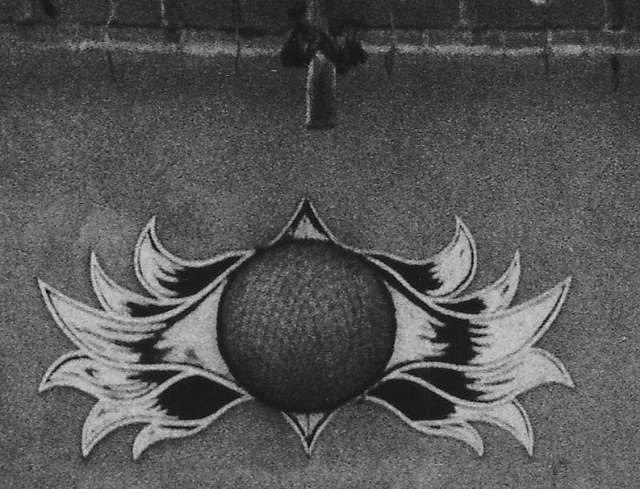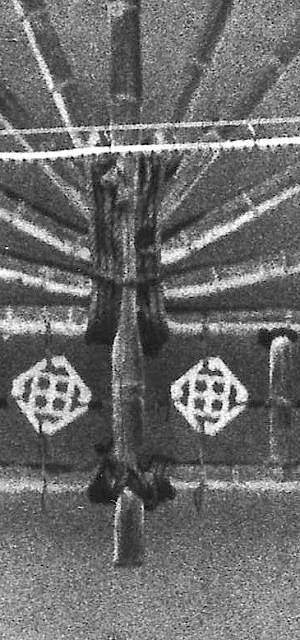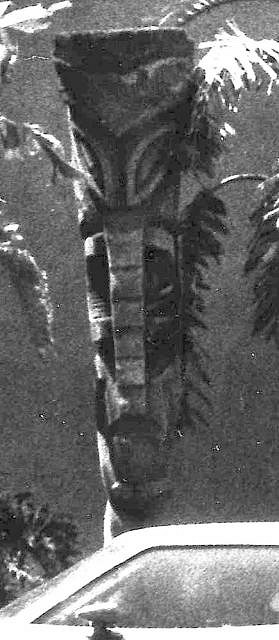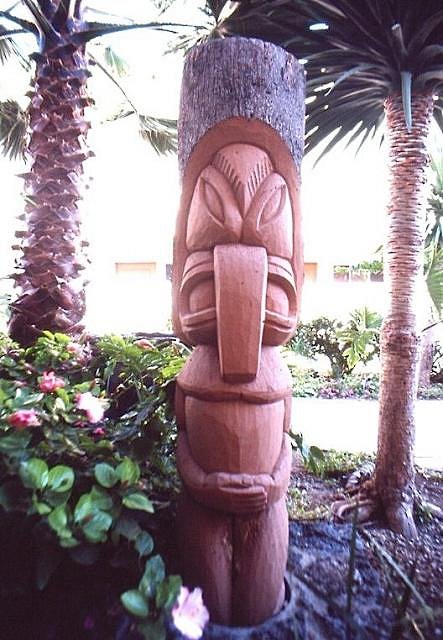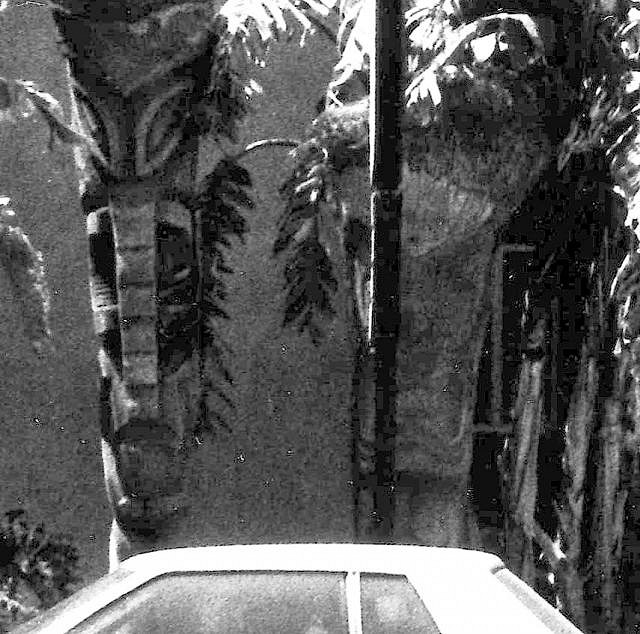Tiki Central / General Tiki / Tiki Archaeology through Photos
Post #574005 by bigbrotiki on Mon, Jan 31, 2011 2:53 PM
|
B
bigbrotiki
Posted
posted
on
Mon, Jan 31, 2011 2:53 PM
Since the advent of scanners and photo grading programs, a lot has become possible. Not quite as much as when Deckard zooms in on and around objects in holographic photos in Bladerunner, but sometimes it feels like one is close. Here is a recent example: I came across this photo in Merry Ovnick's seminal 1999 book "Los Angeles-The End of The Rainbow":
There was not much info on the place, and Tiki style was mentioned as just one of many themes in LA architecture. But since this was the only known image of this apartment building, and apartments actually CALLED "Tiki" are rare, I wanted to know more. The first thing I do is scan the image, so I can work with it on my desktop. That way I can blow it up to a larger size, and lighten it up:
This brought up several interesting questions about the architectural details: Was that fishnet lamp hanging directly in front of the strange fire mosaic, or were the two attached? Unfortunately, the above result was all I could tickle out of the small, low res B&W photo in the book, and research was doomed to end here. So I decided to contact the author, and she thankfully got her photographer to send me a high res version of the shot. This also gave me the address of the place, in Canoga Park, CA, and I was able to check its current state via Google earth:
Sigh. Well, waddaya expect. The photo in the book had been taken in 1982.
I already could see the outline of the Tiki clearer, but it was till too dark, so I made the gamma curve flatter and lightened it up, ignoring the blowing out of the highlights:
One tall Tiki indeed! Well the high resolution allowed me to zoom into some of the details and solve the other questions: The fishnet float lamp was not hanging from the gable at all, it was uniquely cut in half and attached to the wall and the flame design, which I assume was all together back-lit (judging by the size of the window now in its place)
The part of the gable above the lamp was harder to recognize. But it could be that one each of the same Tiki mask were lashed on each side of the bamboo pole, facing the pedestrians:
And the Tiki revealed itself as being from the weird "Nose-tongue" tribe:
...a school not unknown in the Southland of LA. I had seen these at the Islander and the Tiki Tabu apartments:
Kind of an unfortunate concept by an unknown carver who must have felt he had hit upon a "signature" twist on the style... The real surprise came though when I expanded the zoom search to the other areas. Yes, there were more Chinese tiles on the left side of the building, but what I had totally missed, and could not be seen by the human eye, was this fella!:
TWO big ones, right next to each other! He was partially obscured by what I take as a straight shot of a "For Rent" sign post, and also because his features are more washed out, like his palm root hairdo. Either he had been of inferior palm wood, or the second Tiki had been added later to replace his too quickly-aging colleague. In any case, the results of this armchair expedition proved several things: There are still more TIKI temples to be researched; |

